Note: Today’s post was written by our friend and occasional contributor Robert White. Thanks, Robert!
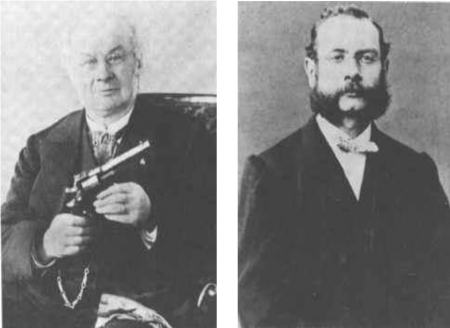
One of the oldest pistols still in service is the Russian M1895 Nagant, designed by Léon and Émile Nagant. Léon Nagant along with Colonel Sergei Ivanovitch Mosin designed one of the oldest rifles still in service, the Mosin Nagant M1891. Let’s take a look at the gunsmiths behind these long lived and robust weapons.
When it comes to revolvers, Colt won the West and the Webley ruled an empire. That still leaves a lot of the world out there. The brothers Léon and Émile Nagant filled it with the many variations of their Nagant revolver. Their work with Remington alone was enough to put them in the gunsmithing history books, but that wasn’t all they did. They designed and built arms for more than 6 counties and even the Pope.
Léon and Émile Nagant didn’t start off in the firearms business. In 1859 Emile (born in 1830) suggested to Léon (born in 1833) to be a partner in a metal fabracation and repair business. They repaired mostly industrial equipment. Liège being one of the major centers of the world for the development and production of firearms, they often found themselves repairing damaged firearms.
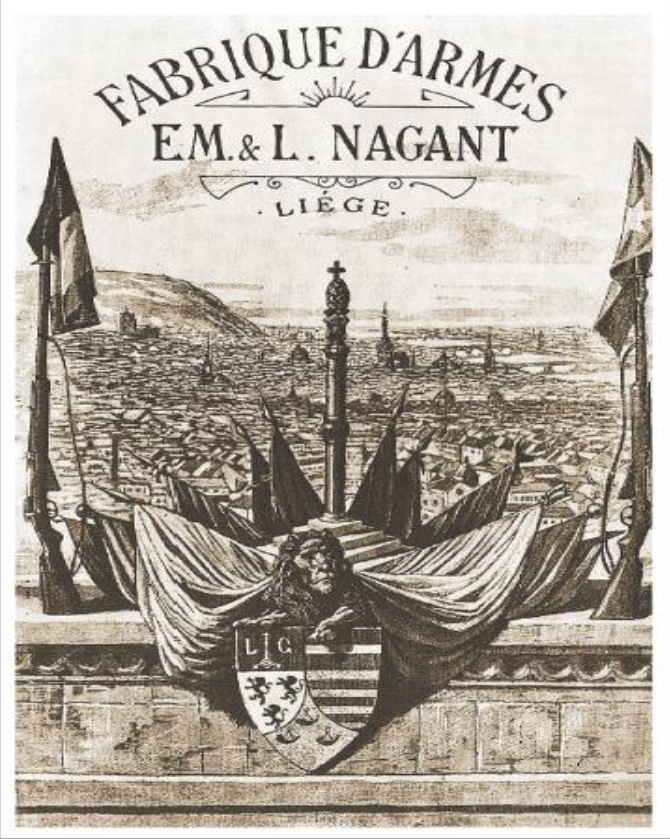
In 1867, the Nagant brothers met Samuel and Eliphalet Remington as they were going through Europe selling their Rolling Block rifles and finding local subcontractors to produce them under license. The Remingtons were so impressed by the production quality and the training of the employees that they proposed to hire the Nagant borthers as one of their subcontractors. The Nagant brothers took the deal and first produced the Rolling Block rifles for the “Pontifical Zouaves of the guard of the Vatican”. These 5,000 rifles have the marks of two crossed St. Peter’s keys on the barrel chamber.
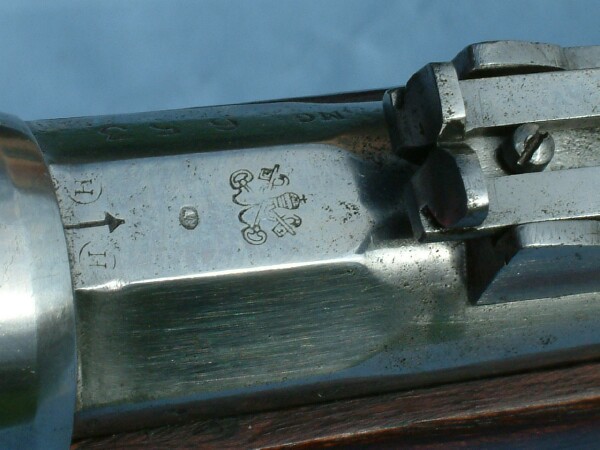
The Nagant brothers didn’t just reproduce the Remington design; they also improved it. One of the improvements was the adaptation of the Rolling Block lock to a double-barrelled shotgun. First, fitted with a double trigger (one for each hammer), then with a single trigger which operated the two hammers in turn. These are the Remington-Nagant.
Until 1900, the Nagant’s produced rifles inspired by the Rolling Block principle. But in 1876 they also produced an 11mm caliber rifle for Greece, based on a locking system developed by a Greek Artillery officer, named Enstathios Mylonas. It was very similar to the Belgian Comblain rifle.
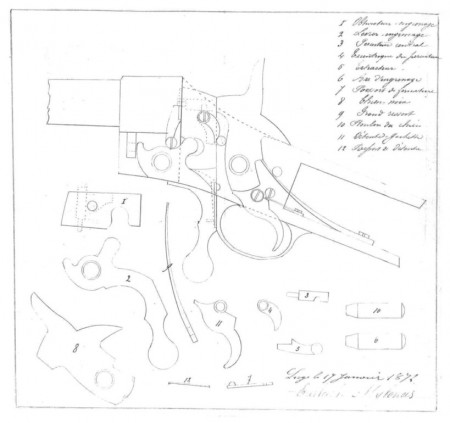
In 1877 a double-barrelled handgun, including a Rolling Block lock was produced. This handgun was to become the first metallic cartridge handgun to be accepted by the Belgian Government to equip its Gendarmerie. This handgun was in service until 1901 when it was replaced by the FN Browning 1900 auto pistol. It was sold on the commercial market until 1910.
There are two types of the model 1877 pistol. The first series (until serial number 1050) was built with a two-part receiver. After the first series, a one part receiver was used. When replaced by the Belgian Government they were sold off as military surplus. Many were bought by the American company Bannerman.
The Nagants also helped with the design of the Dutch revolver model 1873. This handgun, produced by the Dutch Hembrug arsenal and the firm Beaumont of Maastricht, was partially conceived by the Nagants even if it is known as a Chamelot-Delvigne design. Two models are known to exist. The “Old Model” with an octagonal barrel, produced until 1912 before being replaced by a “New Model” with a round and slightly shorter barrel.
The model 1878 Nagant revolver was the first major success with its adoption by several countries. It was available in single or double action and was adapted following the specific design recommendations of the countries that bought it. Following on this they then went on to produce the models 1883, 1878/86 and 1886.
In 1887, the Nagant firm produced a Mannlicher rifle in 8mm and 7.65mm. But due to the complexity of the model, it was quickly replaced by a Mauser system in 1888.
In 1888 the Russian authorities wanted to upgrade their old single shot Berdan rifles. They contacted the Nagant firm and ask them to develop a new rifle with the help of Colonel Sergie Ivanovich Mosin. The rifle known as Mosin-Nagant (aka the three-line rifle) was produced and adopted in 1891.
In 1892 the Nagant brothers produced Comblain rifles to be exported to Brazil and Argentina. The model 1893 revolver in 7.5mm was bought by Sweden, Norway, and Serbia and in .44 by Brazil and Argentina.
Léon Nagant and his brother Emile were well known in the Russian Tsar’s court and military because of the part they had in the design of the new Russian service rifle. So they were called upon again when the time had come to replace the Smith & Wesson revolvers in use in the Russian Army.
The qualifications for acceptance of the new Russian revolver were:
- It had to take down a horse with a single shot at 25-35 meters.
- It had to be light weight – less than 922g (2.03 lb), preferably around 825g (1.82lb).
- It had to hold seven cartridges.
- It had to use the same bore dimensions as the Mosin Nagant rifle so that rejected barrels could be used to make revolvers.
- It had to be single action – double action was thought to impede accuracy.
- It had to be single loading as opposed to using a star extraction system. This was to reduce manufacturing costs, not make it stronger.
- It had to be able to use smokeless powder as well as black powder.
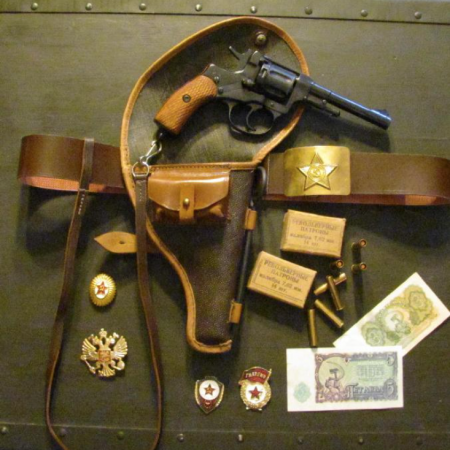
The brothers proposed a new model whose innovative technical characteristics obviated to the usual gas escape between the cylinder and the barrel. This model was adopted by the Russians in 1895.
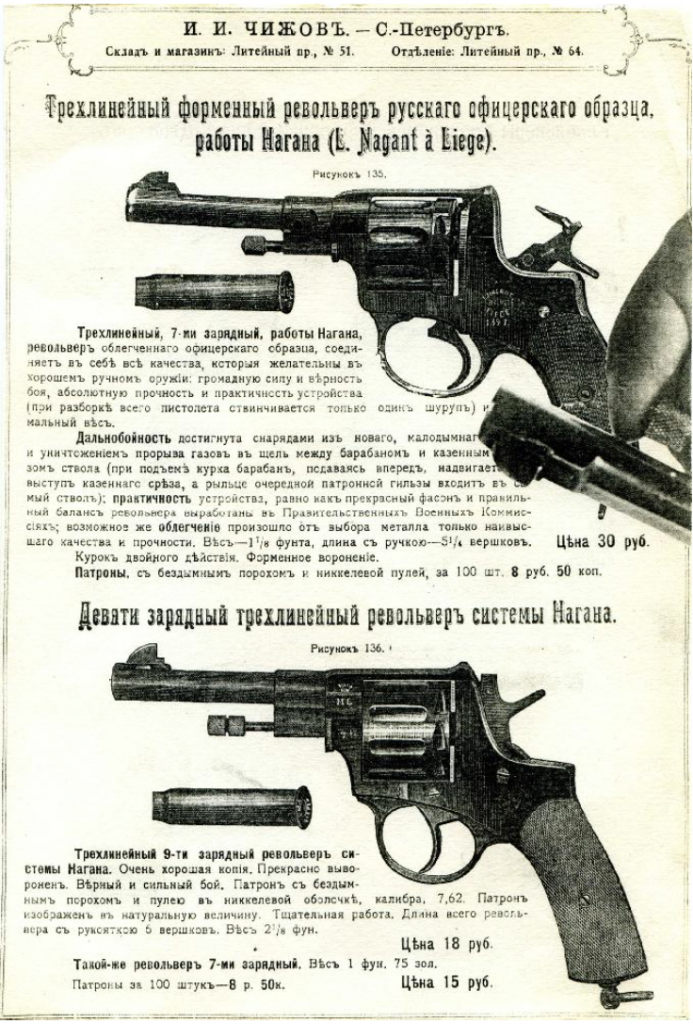
By April 1896, Emile Nagant had become sick, and the two brothers dissolved the company. Immediately, Léon recreated a new company under his own name “Fabrique d’Armes Léon Nagant”. By 1896, Léon and his two sons entered into a new industrial activity, making motor cars.
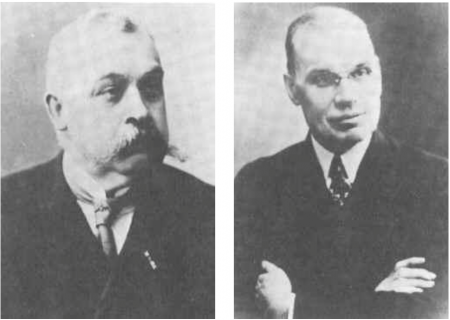
Léon died on February 23, 1900 and on December 23, 1902 Emile Nagant also passed away. The company was then solely managed by Léon’s two sons, Charles (born in 1863) and Maurice (born in 1866). The company’s name was changed to Fabrique d’Armes et Automobiles Nagant Frères.
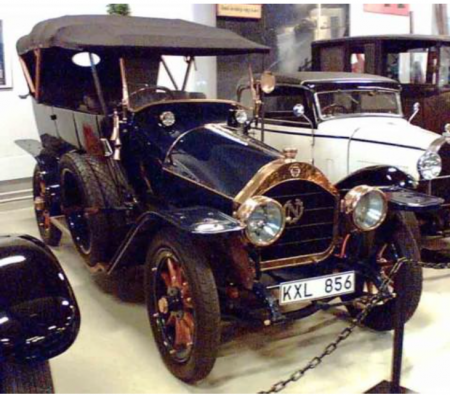
In Russia, the name Nagant carries the same weight Colt does when talking about revolvers of the Old West. The complete Nagant revolver line is yet to be known by many collectors that starts with the model 1878 and ends with the model 1910.
References:
The Guns of Remington by Howard Madaus
The Mosin-Nagant Rifle by Terence W. Lapin
History of Remington Firearms By Roy M. Marcot
Pistols: An Illustrated History of Their Impact By Jeff Kinard
Nagant’s patents about firearms
A copy of these patents can be obtained through:
Office Belge de la Propriété intellectuelle (OPRI)
North Gate
154, Bd Emile Jacquemin
1200 Bruxelles
(Copy service telephone number : 02/2064149 – 50 – 51)
No 25924 – July 13, 1869 (invention) : striker lever and striker stop for Remington rolling-block system.
No 26970 – January 26, 1870 (invention) : with Mr. Bachmann, a in-houseshooting appliance.
No 27667 – May 31, 1870 (invention) : adaptation of the rolling-block system to double-barrelled shotguns.
No 29046 – July 17, 1871 (improvement) : new improved extractor for the rolling- block system.
No 31225 – September 19, 1872 (improvement) : fitting of the new extractor and striker lever to double-barrelled shotguns.
No 33765 – December 19, 1873 (invention) : fitting of the Remington-Nagantsystem to firearms of all calibers.
No 39340 – April 14, 1876 (invention) : single trigger for double-barrelledshotguns.
No 39512 – May 9, 1876 (invention) : fast loading for a rolling-block rifle.
No 41590 – February 27, 1877 (invention) : modification relating to the fast loading design.
No 42456 – June 15, 1877 (improvement) : modification relating to the single trigger design for double-barrelled shotguns.
No 42907 – August 25, 1877 (invention) : revolver model 1878.
No 44563 – March 14, 1878 (improvement) : modification regarding the model 1878.
No 44954 – April 24, 1878 (improvement) : new ejector rod for the model 1878.
No 46620 – November 14, 1878 (improvement) :removable trigger guard for rifles.
No 50871 – March 17, 1880 (improvement) : adaptation of the revolver model 1878 for the single-action mode.
No 51269 – April 24, 1880 (improvement) : bayonet holder.
No 59517 – November 8, 1882 (improvement) : modification about the fast loading rifle.
No 61151 – April 19, 1883 (improvement) : another modification for the fast loading rifle.
No 61794 – June 23, 1883 (invention) : Comblain rifle accessories.
No 63999 – January 30, 1884 (improvement) : another modification for the fast loading rifle.
No 79324 – October 26, 1887 (invention) : Nagant rifle fitted with an horizontaly moving bolt.
No 83431 – September 29, 1888 (improvement) : modification regarding the Nagant rifle.
No 84016 – November 21, 1888 (improvement) : modification regarding the Comblain rifle.
No 84225 – December 10, 1888 (improvement) : new loading clip for the Nagant rifle.
No 84779 – January 26, 1889 (invention) : new steel hardening process.
No 87203 – July 30, 1889 (invention) : Nagant rifle with a Mauser type bolt (Mosin-Nagant).
No 87874 – September 28, 1889 (improvement) : New safety for the Nagant rifles.
No 93345 – January 6, 1891 (improvement) : modification regarding the Mosin- Nagant rifle.
No 95370 – June 22, 1891 (improvement) : modification regarding the Mosin-Nagant rifle.
No 98446 – February 18, 1892 (invention) : Comblain rifle accessories.
No 99113 – April 5, 1892 (invention) : Details about the “gas seal” revolver.
No 99346 – April 14, 1892 (invention) : transformation of the Berdan rifle.
No 107902 – December 20, 1893 (improvement) : new loading clip for the Mosin- Nagant rifle.
No 116198 – June 17, 1895 (improvement) : final drawing of the “gas seal” revolver.


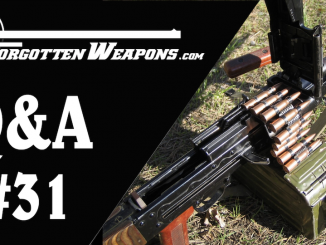
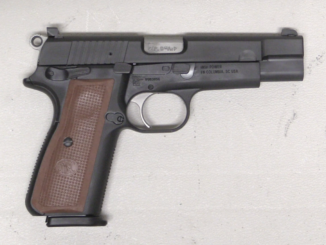
Neat! Anyone have a photo of the Pontifical Zouaves? The Swiss Guard (and a rather nifty 1930s SIG submachine carbine that I don’t think anyone else adopted) I know about but that’s a new one.
Zouaves here: https://en.wikipedia.org/wiki/Papal_Zouaves
“Russian 1895 Nagant revolver”
Notice that this advert is written in pre-1917 Russian (hence the Yat letter can be found, Yat doesn’t exist in modern Russian)
Also notice the lower revolver is 9-shot, (9-shot 3-line revolver system Nagant). This advert the mass of this weapon is 2-1/8 Фунт, one Фунт is 409.5 grams, so its mass is ~870.2 grams, 7-shot “officer model” (double action) revolver has mass 1-7/8 Фунт(~767.8 grams)
Prices:
7-shot “officer model” (double action) – 30 rubles
9-shot single action – 18 rubles
7-shot single action – 15 rubles
100 cartridges – 8.50 rubles
Very good reading in history of firearms. Those people mentioned were true entrepreneurs of their time. As a default, Czarist Russia and later USSR benefited tremendously.
“In Russia, the name Nagant carries the same weight Colt does when talking about revolvers of the Old West.”
Yes, the Nagan (lack of t intentional*) in colloquial Russian can be used to describe any revolver, not necessarily designed by Nagants. Very few designer names were applied to whole fire-arms category. Colt is sometimes used to describe any revolver. In early 20th century Europe “Browning” was used as name for any automatic pistol.
* – one of rules of Russian language: write it how you hear it. For example: Imperial (Tsarist) Russian Navy has rank мичман which name was derived from Midshipman (this rank was used in Royal Navy), мичман with Latin letters would be michman, so as you can see other than original (Midshipman – мичман – michman)
Excellent review of the Nagant brothers and their works. The sheer scale of he Belgian gun trade in the later 19 and early 20th centuries always striking. Shame there is no decent English language study or overview (is there one in French?).
I do a lot off work in Albania where since the fall of the communists families have been turfing out endless old family firearms (no self respecting Albanian prior to 1939 would have been without, or earlier still, seen without a prestigious revolver or automatic). The antiques bazaar in Kruja has while I’ve known it produced Steyr automatics, Gasser’s, early PO8s and C96 pistols. But the point of this is that I was offered a very nice 1898 dated Nagant, clearly once the pride and joy of a local Bey. However, UK gun laws being what they are I left it there… Someone though did purchase it as it was gone by my next visit. Interesting Balkan copies of revolvers, especially Gassers, also abound, and I have seen a couple of Browning 1900 local copies too. Its not just the Khyber gunsmiths who hand made desirable copies.
Does anyone know: was the lack of a spring-loaded ejector rod also a cost saving measure?
Spring-loaded ejector rods were not very common or considered necessary on European revolvers back then. Most had purely hand-operated ones, and ones that were stored in a hollow cylinder base-pin like the Nagant’s were typically found on short-barreled “Bull Dog”- type pocket revolvers made on the Webley pattern, as well as larger “holster” type arms.
The spring-loaded ejector made on the William Mason patent was pretty much an American specialty, due to Colt holding the rights to the patent.
While the Nagant’s rod-ejection system was certainly slower than the simultaneous automatic ejector of the Smith & Wesson Russian Model single-action it largely replaced, it must be noted that it was both mechanically simpler and less expensive to manufacture.
And it was still less of an aggravation than the ejector system of the “other” Russian issue revolver, the 10.4mm Galand and Somerville patent, also made by Nagant at Liege and later at the Tula arsenal;
http://www.angelfire.com/nh/milarm/galand.html
cheers
eon
The Rast & Gasser M1898, which was the closest contemporary of the M1895 Nagant with a similar ejection system (the French mle. 1892 had a swing-out cylinder), did have a spring-loaded ejector rod. The Swiss Schmidt M1882 did not. The other European military revolvers were older designs from the 1870s and not really contemporary to the M1895 (although the M1895 was of course also derived from older Nagant designs going back to the M1878).
“Russian issue revolver”
To be exact: Galand was adopted by Russian Navy in 1869 as a «4 1/2-линейный револьверъ Галяна». It fire 12x14R cartridge, barrel length: 122mm, overall length: 240mm. 2500 revolvers and 75000 cartridges were ordered in Belgium, 1500 revolvers and 155000 cartridges in Russia. In 1881 Russian Navy adopted Army Smith-Wesson revolver, but nonetheless Galand revolvers were used yet about 10 years.
About 1980 I recall a number of Russian made cased Nagant target revolvers being imported into the UK. The model was known as a TOZ 36. The ammo was a pain so we had a trial cylinder made for one to accept .32 S&W Long Wadcutters. Not that difficult as each chamber located on the breech end of the barrel so inter-chamber precision was not critical and there was no need for cylinder locking bolt slots as in the Colt and S&W designs. This, I believe, was the true merit of the design, the gas seal aspect being of no consequence.
They ended up being exported to Australia where, I’m told, their paper punching capabilities were much appreciated.
“Russian made cased Nagant target revolvers being imported into the UK. The model was known as a TOZ 36.”
TOZ 36 chamber 7.62 Nagant cartridge and is gas-seal but otherwise it is different from Nagant 1895. Designer of TOZ 36 is Ефим Леонтьевич Хайдуров (article Russian: http://www.shooting-ua.com/books/book_279.htm ) which was shooter (win Silver on Cairo 1961 championship [personally] and Gold [team]), also exist TOZ 36 variant for shorter cartridge – TOZ 49.
I have heard of 1895s being rechambered for 7.62×25 Tokarev during WWII, but not actually seen one myself.
Not rechambered, (some) new cylinders were made for damaged guns. There was a cylinder on gunbroker some year or two ago, but I am not sure if original or repro.
Anyay, 7.62x25mm will push gun well in the “danger zone” 🙂
Since 7.62mm Tokarev won’t be gas sealed, one would think that with a strong enough replacement cylinder the combination would not be too dangerous.
Somewhere was reported that, single loading feature had been demanded to keep the revolver as fully loaded whenever the shortest time for extraction and reloading being obtainable.
“It had to use the same bore dimensions as the Mosin Nagant rifle so that rejected barrels could be used to make revolvers.”
Wow – now THAT’s planning ahead and good thinking!!
A-H did same with Rast-Gasser, French with Mle.1892, Swiss with their revolver etc. Even previously, Swiss and Italians used same bores for revolvers as for their Veterli rifles. I am not sure if Reichrevolver uses same bore as 1871 Mauser and French Mle.1873 as Gras, but I would not be surprised.
Interestingly, the advertisement for the company Ian published above shows two Nagant rifles of the experimental type submitted to Belgian army trials in August 1888, an clever straight-pull design. The Nagant brothers had high hopes for this rifle, but eventually it lost to Mauser.
Good eye!
Thanks, Ian! And sorry for the typo: where it reads “an clever straight-pull design”, it should read “a clever straight-pull design”…
A good book (though no longer on print) is Claude Feys and René Smeets’ Les Revolvers et les Fusils Nagant (Paris: Éditions Jacques Grancher, 1982). The book is truly a great read, with many details, complemented by black and white pictures, of the lesser known revolvers, the Mylonas rifle (built by the Nagant brothers for the Royal Hellenic Army) and the experimental straight-pull 8mm rifle mentioned above (the authors managed to photograph a pristine example from the Liège Arms Museum), just to name a few nice things.
It’s difficult to figure out how much Mosin actually contributed to the 1891 rifle. What exactly did he design? My guess is nothing, other than providing design “direction”.
The 1891 bolt is a very clever design, especially compared to contemporary French and German models with separate bolt heads, which required tools to disassemble. I wonder if the forward thinking was toward a new, perhaps rimless, cartridge, in which case, only the bolt head would need to be changed, allowing the rest of the bolt to be reused. IMHO, an unappreciated facet of this design.